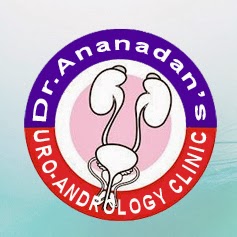Kidney stone is also known as Renal Stone is a common disease seen in everyone nowadays. This may be because of todays work routine. Nobody is really aware of the problems that may arise due less urination. Every one has kidney stones and they may go when we urinate but if the stones becomes bigger it will be very difficult to pass through urination. Stones are formed when the urine becomes concentrated, allowing minerals to crystallize and stick together. The kidney stones can damage your urinary tract. Depending on your situation, you may need nothing more than to take pain medication and drink lots of water to pass a kidney stone. In other instances, surgery may be needed.
If a kidney stone is so large that it cannot be passed naturally i.e. if the stone is 6-7mm in diameter or even larger, you may have to resort to other treatment options which could include:
- Extracorporeal shock wave lithotripsy (ESWL)
- Ureteroscopy
- Percutaneous nephrolithotomy (PCNL)
- Open surgery
In Extracorporeal shock wave lithotripsy, a shock wave will be given to the stones in the kidney of the patients. The energy of shock waves will disintegrate the stones into small pieces so that it can be flushed out through the urine.
If the stone is formed in your ureter then you have to undergo Ureterorenoscopy. In this treatment, a telescope known as ureteroscope will be inserted through the urethra to the bladder. It is then moved up into the ureter where the stone is stuck. Now the doctor will gradually remove the stones either by an equipment or with a laser to break the stones into small pieces. Then the small pieces of stone can then be passed out in your urine.
Percutaneous Nephrolithotomy is done for patients who have big kidney stones and for those for whom other treatments is not possible. This is done by making an telescopic incision in the skin. The doctor will pass a nephroscope through this port into the kidney to break up the stone into pieces and to remove the debris from the stone. PCNL is performed under general anesthesia and real-time x-ray control known as fluoroscopy.
Open surgery is very rare and usually recommended if there is an extremely large stone or an abnormal anatomy. This procedure involves creating an incision in your back to gain smooth access to the ureter and the kidney. The kidney stone can then be easily removed.
Bladder Stone is formed when the urine minerals deposit in the bladder. The urine will concentrate and form stones. This concentrated, stagnant urine is often the result of not being able to completely empty your bladder. Normally we can't identify, if we have bladder stones. It is always discovered while we take other tests. If it becomes severe , then it may show symptoms like, blood in urine or abdominal pain etc.
Cystolitholapaxy is one of the common methods for removing bladder stones. It's a very easy method. A minute camera called a cystoscope will be inserted into the bladder through the urethra. Now the doctor can see the stones clearly through the camera. Then the stones will be fragmented into small pieces and will be flushed out of the bladder.
Surgical removal
Sometimes the stones formed inside the bladder will be too big or it may be difficult to remove the stones by the open surgery. Then the doctors will make a small incision in the bladder and removes the stones. Also if any other problems are also existing, it can be rectified at the same time.
For more visit us:
Mail us: drnanandan@gmail.com






